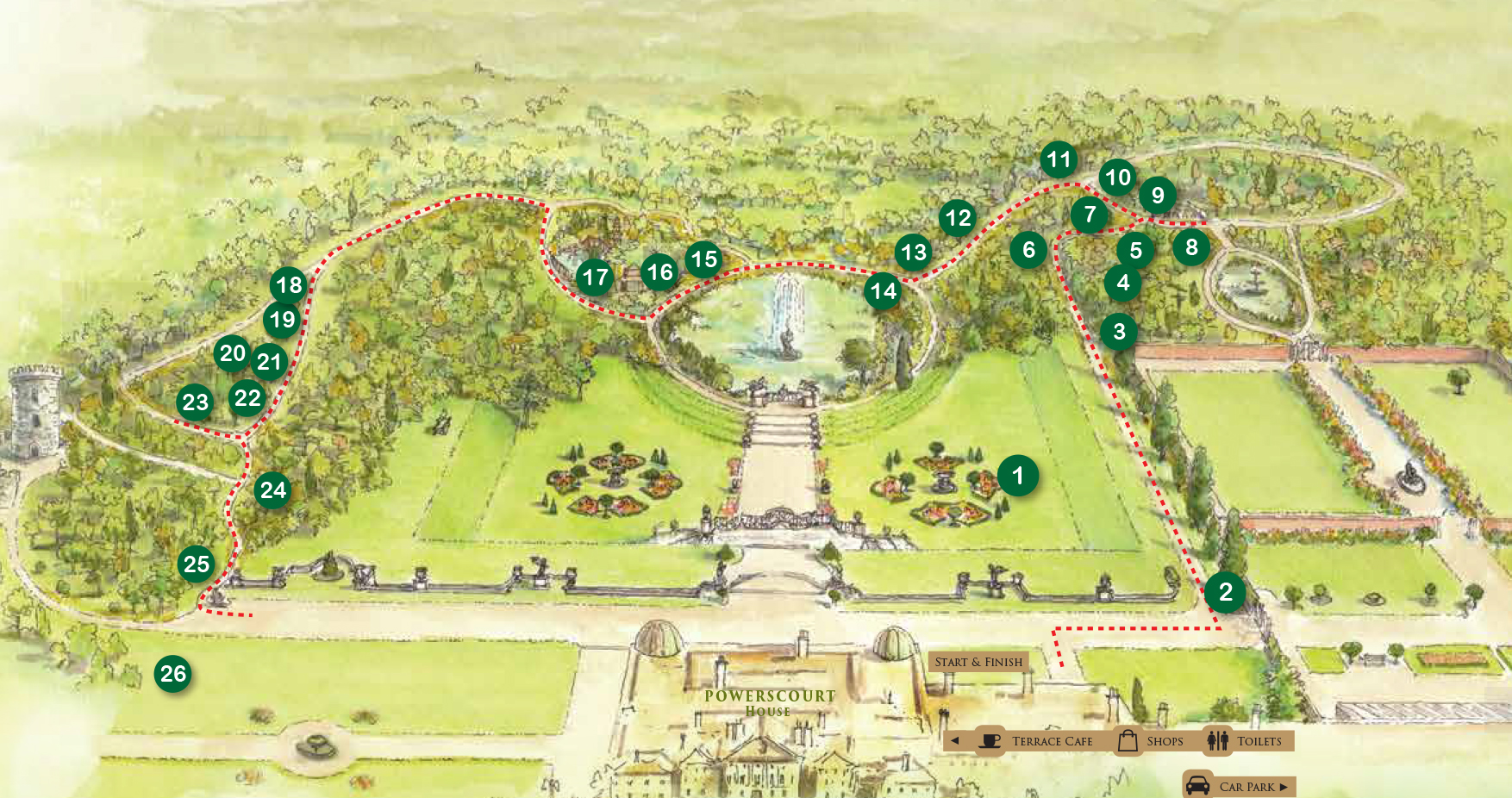Explore the Trees
The moment visitors arrive at Powerscourt Estate they are greeted with a tree lined avenue of beech trees planted over 250 years ago by the 1st Viscount Powerscourt. The romantic landscape of trees overlooking Sugarloaf Mountain and surrounding countryside is a pleasure to walk or drive through during each of the seasons.

The trees at Powerscourt have been planted over the past two centuries and there are now hundreds of varieties for visitors to enjoy. Today they may look quite familiar, but in the 19th century they were mostly new and exotic trees, collected from the Americas and all over the world. Thanks to Viscount Powerscourt’s tree planting programme of 1870, Powerscourt today boasts many wonderful tree species including Douglas-Firs, Corsican Pines, Giant Redwoods, Atlantic Cedars, Noble Firs and countless more.
The dark Conifers which frame Triton Lake and the Italian garden in Powerscourt Gardens were designed to create a vista that was part of the wider landscape. This view was created between 1840 and about 1890 by the 6th and 7th Viscounts. Planting continued under the 8th Viscount in the early years of the 20th century and continues to this day.
Our climate at Powerscourt is relatively kind, hence the rapid growth recorded for many trees in the gardens. The River Walk at Powerscourt features the tallest tree in Ireland, a Douglas Fir. The tree stands at 61.5 metres, or 202 ft, towering above well-known landmarks including Dublin’s Liberty Hall (59.5 m) and Niagara Falls (51m).
We have Irish and European champion trees at Powerscourt including a Wild Cherry, a Torrey Pine and a Southern Beech. There are many exceptional trees on the estate including a line of Douglas Fir which are among the tallest in Ireland and about 150 years old. The Dawn Redwood is another notable tree on the estate which was discovered in China in 1947 and introduced to Ireland in 1949. Come for a walk at Powerscourt and discover our beautiful arboretum of trees today.
Sustainability & Biodiversity
The long-term overarching mission at Powerscourt Estate is to be recognised on a global stage for our sustainability initiatives, and to be Net Zero by 2025.

